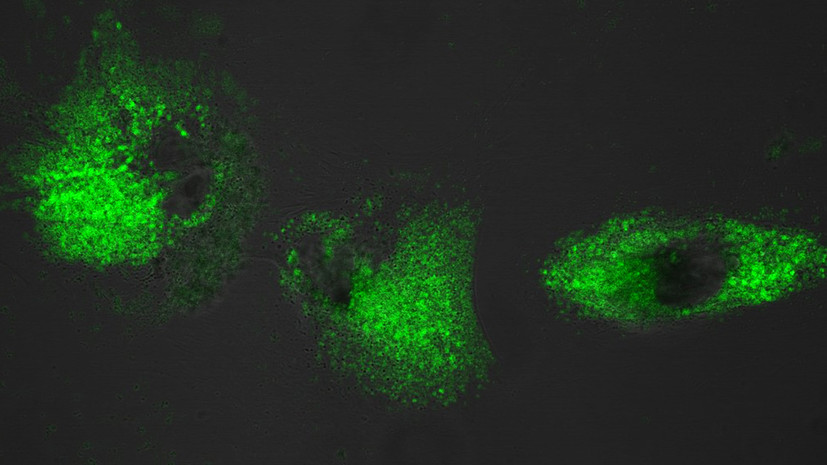International team of scientists representing RussianUniversity of Chemical Technology DI. Mendeleev (RCTU), the Research Center “Small-tonnage Chemistry”, the Institute of Gene Biology of the Russian Academy of Sciences, the Institute of General Physics of the Russian Academy of Sciences, as well as the Technical University of Chemnitz (Germany) and the University of Erlangen-Nuremberg (Germany), have developed a new complex of fluorescent compounds that can show an excess of calcium in the body. This was reported in Sensors and Actuators B.
Russian and German chemists have developed a method for the synthesis of new compounds that allow not only to find, but also to contrastly highlight calcium ions in the bone and soft tissues of the body. Receivedmolecules contain two functional groups. The first group (bisphosphonate) detects calcium in the body and chemically binds to it, and the second (naphthalimide) intensively fluoresces with bright light under the influence of laser radiation.
According to scientists, there are no direct analogues of the new development in the world - laboratory studies of some similar compounds are known, but their synthesis is very complex and expensive. The capabilities of the new molecules are confirmed by a series of in vitro experiments (in vitro), including on human connective tissue cells.
“Prior to this, no fluorescent bisphosphonates were created on this optical platform. We got a molecule that goes where problems with bone or soft tissues are observed. It turns out such a receptor that combines with calcium and illuminates it, ”said Maxim Oschepkov, associate professor at the Russian Chemistry Technical University.
The experiments showed that the obtained molecules easily penetrate throughmembrane inside the cells without damaging them. Then they bind to calcium ions, after which they can be observed using a fluorescence microscope.
This diagnostic method has high sensitivity and visibility, and fluorescent markers are much safer and cheaper compared to radioactive labels, the researchers note. According to them, in the future it is possible the introduction of such compounds into the body orally or by injection.
Moreover, during operations, the surgeon will only need to wear a mask with a light filter to see calcified areas of open tissues highlighted by synthesized molecules.
In the future, the researchers plan to modify the resulting compounds so that they fluoresce in the infrared range. It is assumed that they will better penetrate biological tissues and increase diagnostic capabilities.
Scientists are also sure that their development will find application in fundamental research of intracellular processes involving calcium.
“Its (calcium) concentration is very different inside and outside the cells of multicellular organisms, and many different physiological processes are tied to this. Our work can be used by other scientific groups as a new tool for studying and visualizing calcium processes, in particular physiological ones, ”concluded Sergey Tkachenko, associate professor of RCTU.
Recall that calcium is the most common macronutrient in our body. It makes up about 2% of a person’s body weight. However, its overabundance is a serious medical problem. In particular, an increased concentration of calcium in the tissues of the mammary glands, kidneys or blood vessels may indicate the early stages of various pathologies, including malignant tumors.

